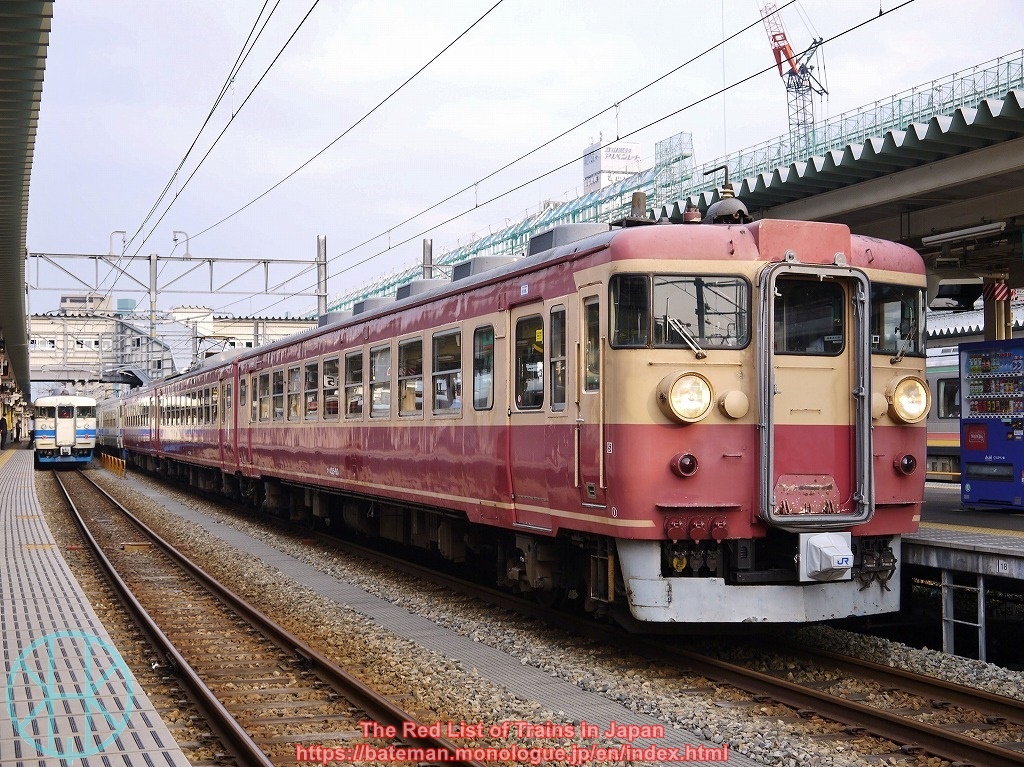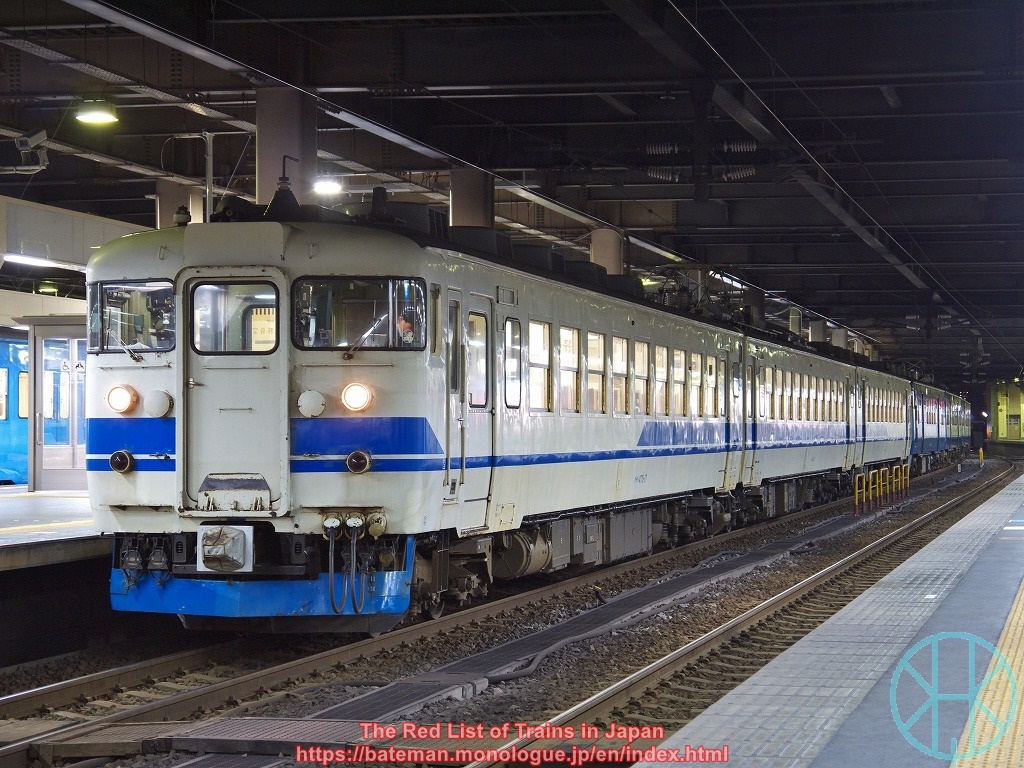JNR 457, 475 and relevant series

Data (as of 21 Dec 2024)
| Status: | Extinct |
| (JR Group) | |
| Critically Endangered | |
| (Echigo Tokimeki) | |
| Constructed in: | 1962-1971 |
| Number built: | 618* |
| Registered: | 1 |
*Including 34 carriages converted from JNR 165 and 169 series.
History
There were seven types of dual-voltage express train developed by Japanese National Railways: 451, 453, 455, 457, 471, 473 and 475 series. All trains had two sets of doors per carriage with enclosed vestibules and transverse seating, as they were designed for semi-fast services on middle or long-distance journeys. These series were effectively the same for passengers, but their traction, motors and other equipment were slightly different, as the table below shows. It is reminded that AC 20 kV 50 Hz electricity is used in eastern Japan, while that of 60 Hz is in the west. All seven types are compatible with DC 1.5 kV as well.
| Series | AC frequency | Motor output | Enhanced brakes | In service |
|---|---|---|---|---|
| 451 | 50 Hz | 100 kW | No | 1962-92 |
| 453 | 120 kW | 1963-92 | ||
| 455 | Yes | 1965-2008 | ||
| 457 | 50 and 60 Hz | 120 kW | 1969-2014 | |
| 471 | 60 Hz | 100 kW | No | 1962-2010 |
| 473 | 120 kW | 1963-86 | ||
| 475 | Yes | 1965- |
These seven series were developed by Japanese National Railways when major lines in Tohoku, Hokuriku and Kyushu regions were electrified. Since JNR adopted alternating current in these areas while direct current has been in use in major cities like Tokyo and Osaka, JNR had to develop them along with other dual-voltage EMUs like 485 series. The seven series had been used for various semi-express services (simply "express" after 1968) connecting Tokyo or Osaka and other cities, such as Tokiwa (Ueno - Sendai via Joban Line), Echizen (Osaka - Fukui), and Hayatomo (Nagoya - Kumamoto). They were also widely used for other express services in Tohoku, Hokuriku and Kyushu regions, some of which consisted of up to 13 coaches with Green Cars (first class) and buffet cars.
However, as most express services were promoted to limited express or discontinued, almost of all carriages were reallocated to stopping services in the regions by 1985, while many Green Cars and buffet cars were scrapped. Since then, the seven series have been regarded as suburban trains. Many carriages were converted to 413 and 717 series in the 1980s.
When JNR was privatised in 1987, 451, 453 and 455 series were allocated to JR East, 471 and 473 series were allocated to JR West, 475 series were succeeded by JR West and JR Kyushu, and 457 series were distributed to those three JRs. The companies reluctantly retained them for years as the series were so old and smaller capacity than other genuine suburban trains, but there was no money to replace them all at once. JR East, JR West and JR Kyushu withdrew all of them by 2008, 2021 and 2010 respectively.
In 2021, Echigo Tokimeki Railway purchased a carriage from JR West and uses it for express trains for tourists.
Current Operations & Future Prospects
Echigo Tokimeki Railway uses one, and it forms three coaches with two 413 series carriages. The unit is mostly used for Express services for tourists at weekends and on holidays. The company initially planned to withdraw it by the early-2023, but a major overhaul was carried out thanks to donation by enthusiasts, allowing it to run until around 2028 unless a fatal damage is observed.
Photo

A 475 series train on Hokuriku Main Line (JR West livery)
(Updated: 21 Dec 2024)
